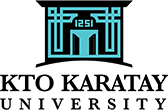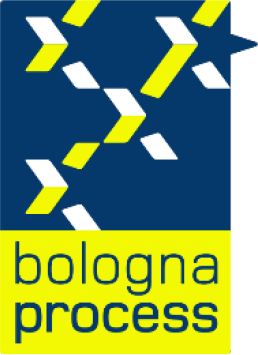Medical Imaging Techniques
Course Details

KTO KARATAY UNIVERSITY
Vocational School of Medical Services
Programme of Medical Imaging Techniques
Course Details
Vocational School of Medical Services
Programme of Medical Imaging Techniques
Course Details

| Course Code | Course Name | Year | Period | Semester | T+A+L | Credit | ECTS |
|---|---|---|---|---|---|---|---|
| 99401019 | Health Physics | 1 | Autumn | 1 | 2+0+0 | 3 | 3 |
| Course Type | Elective |
| Course Cycle | Associate (Short Cycle) (TQF-HE: Level 5 / QF-EHEA: Short Cycle / EQF-LLL: Level 5) |
| Course Language | Turkish |
| Methods and Techniques | - |
| Mode of Delivery | Face to Face |
| Prerequisites | - |
| Coordinator | - |
| Instructor(s) | - |
| Instructor Assistant(s) | - |
Course Content
Definition of Health Physics, History, Classification of radiations, physical properties, Interaction with matter, Biological Effects of Ionizing Radiation, Irradiation and dose calculations from internal and external radiation sources, Methods of Protection from Radiation and related legislation, Health Physics instrumentation, non-ionizing radiations.
Objectives of the Course
To teach radiations, their physical properties, interactions with matter, their biological effects on living tissue and environment, to gain basic knowledge necessary for protection from radiation and safe use of radiations.
Contribution of the Course to Field Teaching
| Basic Vocational Courses | |
| Specialization / Field Courses | |
| Support Courses | X |
| Transferable Skills Courses | |
| Humanities, Communication and Management Skills Courses |
Relationships between Course Learning Outcomes and Program Outcomes
| Relationship Levels | ||||
| Lowest | Low | Medium | High | Highest |
| 1 | 2 | 3 | 4 | 5 |
| # | Program Learning Outcomes | Level |
|---|---|---|
| P | 3 | |
| P10 | The individual has the ability to use the information he/she obtains from different disciplines in a personal way, in line with his/her interests and abilities. | 5 |
Course Learning Outcomes
| Upon the successful completion of this course, students will be able to: | |||
|---|---|---|---|
| No | Learning Outcomes | Outcome Relationship | Measurement Method ** |
| O1 | Being able to make sense of the information an individual will obtain from different disciplines in line with their interests and abilities. | P.10.1 | 1 |
| O2 | Being able to explain the information that an individual will obtain from different disciplines in line with their interests and abilities. | P.10.2 | 1 |
| O3 | The ability to use the information obtained from different disciplines in line with the individual's interests and abilities in his/her own field. | P.10.3 | 1 |
| O4 | Ability to analyze application results using information obtained from different disciplines in line with the individual's interests and abilities. | P.10.4 | 1 |
| O5 | The ability to create a new structure by combining the information obtained from different disciplines and the information in one's own field in line with the individual's interests and abilities. | P.10.5 | 1 |
| O6 | Being able to evaluate the information that an individual will obtain from different disciplines in line with their interests and abilities. | P.10.6 | 1 |
| ** Written Exam: 1, Oral Exam: 2, Homework: 3, Lab./Exam: 4, Seminar/Presentation: 5, Term Paper: 6, Application: 7 | |||
Weekly Detailed Course Contents
| Week | Topics |
|---|---|
| 1 | Definition of Health Physics, History, classification of radiations |
| 2 | Physical Principles, atomic and nuclear structure, sizes and units used in radiation protection |
| 3 | Interaction of radiations with matter; charged particles |
| 4 | Interaction of radiation with matter; electromagnetic radiations |
| 5 | Interaction of radiation with matter; electromagnetic radiations |
| 6 | Biological effects of radiations, Regulations on Radiation Safety, regulations |
| 7 | Biological effects of radiations, Regulations on Radiation Safety, regulations |
| 8 | Midterm |
| 9 | External dose calculations |
| 10 | Internal dose calculations |
| 11 | Internal dose calculations |
| 12 | Radiation Protection Methods |
| 13 | Radiation Protection Methods |
| 14 | Health Physics Instrumentation |
| 15 | Measurement of Environmental Radiations |
| 16 | Final Exam |
Textbook or Material
| Resources | Atoms, Radiation, and Radiation Protection (third, completely revised and Enlarged Edition), James E. Turner , Wiley-VCH,2007. |
Evaluation Method and Passing Criteria
| In-Term Studies | Quantity | Percentage |
|---|---|---|
| Attendance | - | - |
| Laboratory | - | - |
| Practice | - | - |
| Field Study | - | - |
| Course Specific Internship (If Any) | - | - |
| Homework | - | - |
| Presentation | - | - |
| Projects | - | - |
| Seminar | - | - |
| Quiz | - | - |
| Listening | - | - |
| Midterms | 1 | 40 (%) |
| Final Exam | 1 | 60 (%) |
| Total | 100 (%) | |
ECTS / Working Load Table
| Quantity | Duration | Total Work Load | |
|---|---|---|---|
| Course Week Number and Time | 14 | 2 | 28 |
| Out-of-Class Study Time (Pre-study, Library, Reinforcement) | 14 | 2 | 28 |
| Midterms | 1 | 10 | 10 |
| Quiz | 0 | 0 | 0 |
| Homework | 0 | 0 | 0 |
| Practice | 0 | 0 | 0 |
| Laboratory | 0 | 0 | 0 |
| Project | 0 | 0 | 0 |
| Workshop | 0 | 0 | 0 |
| Presentation/Seminar Preparation | 0 | 0 | 0 |
| Fieldwork | 0 | 0 | 0 |
| Final Exam | 1 | 15 | 15 |
| Other | 0 | 0 | 0 |
| Total Work Load: | 81 | ||
| Total Work Load / 30 | 2,70 | ||
| Course ECTS Credits: | 3 | ||
Course - Learning Outcomes Matrix
| Relationship Levels | ||||
| Lowest | Low | Medium | High | Highest |
| 1 | 2 | 3 | 4 | 5 |
| # | Learning Outcomes | P10 |
|---|---|---|
| O1 | Being able to make sense of the information an individual will obtain from different disciplines in line with their interests and abilities. | 5 |
| O2 | Being able to explain the information that an individual will obtain from different disciplines in line with their interests and abilities. | 5 |
| O3 | The ability to use the information obtained from different disciplines in line with the individual's interests and abilities in his/her own field. | 5 |
| O4 | Ability to analyze application results using information obtained from different disciplines in line with the individual's interests and abilities. | 5 |
| O5 | The ability to create a new structure by combining the information obtained from different disciplines and the information in one's own field in line with the individual's interests and abilities. | 5 |
| O6 | Being able to evaluate the information that an individual will obtain from different disciplines in line with their interests and abilities. | 5 |
